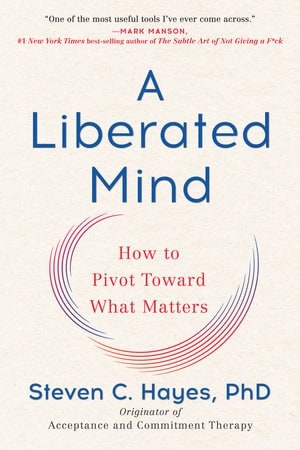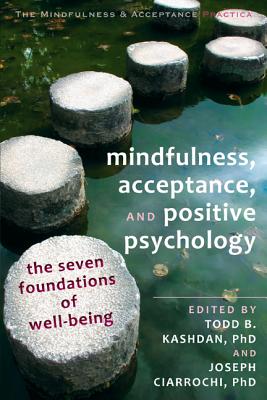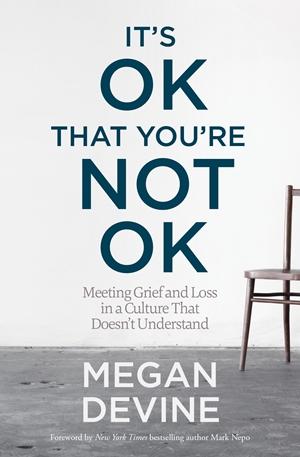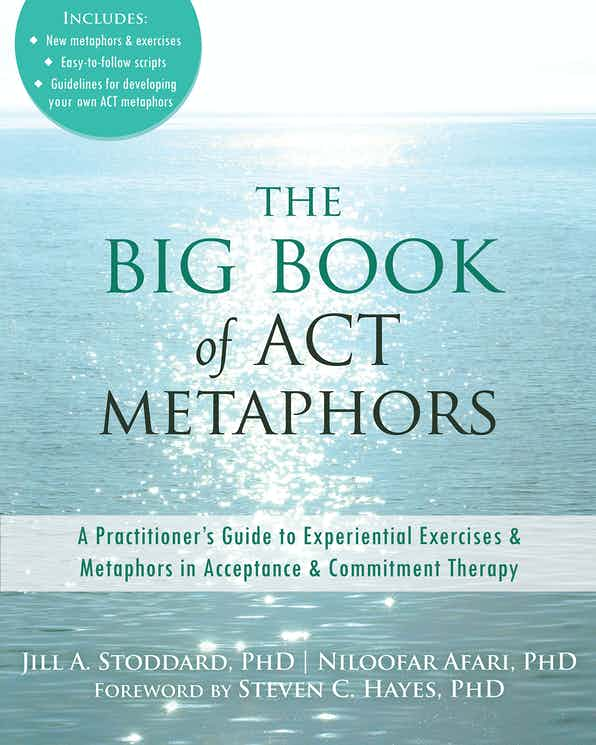Acceptance
Acceptance: Overview, Benefits, and Practice
THC Editorial Team June 11, 2021

Contents
- Overview
- Principles of Acceptance
- Difference Between Acceptance and Self-Acceptance
- Benefits of Acceptance
- Therapies With a Core Emphasis on Acceptance
- Practicing Acceptance
What Is Acceptance?
Acceptance is the process of allowing things to be as they are without actively trying to change them. Much like mindfulness, it entails letting any experience—positive, neutral, or negative—simply exist in life without trying to alter, avoid, or deny it. To some, acceptance comes easily. To many, acceptance is a process that requires conscious effort, skill, and wisdom.
Practicing acceptance has long been seen as having a positive effect on people’s lives.1 Psychologists have long posited that the practice of acceptance leads to better mental health, personal growth, and wellness. In addition, practicing acceptance enables people to open themselves to unpleasant feelings or thoughts and allow them to exist without trying to suppress or avoid them. It also provides an opportunity to move on more quickly from issues and struggles.2 When we allow the present moment to exist, we can more easily begin to work on what is important now without attempting to deny, suppress, or reject it.
Throughout history, the utility and benefits of acceptance have been emphasized in religion and spirituality.3,4,5 The oft-recited Serenity Prayer is an apt description of the principle of acceptance:6
God, grant me the serenity to accept the things I cannot change, courage to change the things I can, and the wisdom to know the difference.
Underlying Principles of Acceptance
In a comprehensive review of the concept of acceptance published in the Journal of Imagination, Cognition and Personality, authors Williams and Lynn discussed the primary components of acceptance as the following:7
Nonattachment
- Nonattachment refers to not letting oneself get attached to things (material or otherwise, but mostly material) in a world of impermanence. Within this perspective, people recognize that nonattachment is beneficial because nothing permanently remains the same, everything changes, and everything passes.
Non-avoidance
- Non-avoidance refers to not avoiding certain areas of life, such as uncomfortable situations or truths. According to the principle of non-avoidance, people can effectively deal with events that require attention when they engage with them rather than avoid them.
Nonjudgment
- Nonjudgment refers to a conscious effort to avoid evaluating something as good, bad, right, or wrong. In common terms, this could mean attempting not to judge others and to have an open mind toward situations, people, and events, leading to deeper levels of understanding and relationships.
Tolerance
- Tolerance refers to allowing something challenging to take place while still staying present with it. It can include experiences that are physical, emotional, mental, or other. Tolerating challenging experiences facilitates greater acceptance of reality. Tolerance requires strength and can be practiced, trained, and developed.
Willingness
- Willingness refers to choosing to be a part of something. One can choose not to avoid, judge, or be intolerant of a thing. Therefore, willingness refers to a conscious choice to be an accepting person.
Acceptance is not an all-or-nothing concept but rather a spectrum. On the other side of the acceptance spectrum are nonacceptance mechanisms, including avoidance, resistance, denial, suppression, and repression. These approaches run counter to acceptance and can lead to unpleasant outcomes. Avoidance and suppression of experiences deemed to be negative can lead to a variety of mental health conditions, such as depression, anxiety, absentmindedness, and poorer quality of life.8
The Difference Between Acceptance and Self-Acceptance
Sometimes people struggle to understand the difference between acceptance and self-acceptance as mental health practices. In general, the difference relates to the locus of the practice: self-acceptance refers to practicing acceptance only in relation to oneself, whereas acceptance can occur in relation to oneself, other people, or even events, objects, situations, and circumstances.
Self-acceptance has long been seen as pivotal to mental and emotional well-being, and psychologists have found correlations between self-acceptance and the acceptance of others.7 For example, Carl Rogers and fellow noted psychologist Abraham Maslow placed substantial emphasis on self-acceptance, with Rogers suggesting that self-acceptance improves relationships between people.8
One form of self-acceptance is experiential acceptance, which refers to “embracing ‘private experiences’ (e.g., thoughts, emotions, memories—experiences an individual has that no outside observer can directly see) and allowing these experiences to be present without trying to avoid or get rid of them.”9
A popular topic for academic discussion among psychological researchers has been the comparison of self-acceptance and self-esteem. In general, self-acceptance has been viewed as having more positive mental and emotional health outcomes than self-esteem.8 A leading researcher in this area, psychologist Albert Ellis, described how to apply self-acceptance to help people feel good about themselves:8
- See yourself as worthwhile and valuable because you exist and are unique, with specific strengths and weaknesses.
- Accept yourself in spite of your achievements, your flaws, and whether or not people approve of you.
- Do your best to improve on past behavior.
- Don’t rate or berate yourself.
- Evaluate only what you think, feel, and do.
Potential Benefits of Acceptance
Higher acceptance levels lead to, or positively correlate with, numerous benefits in one’s mental health, personal growth, and wellness, such as the following:
- work-related benefits, including a better sense of job control10
- increased pain tolerance and reduced pain11,12
- reduced disability12
- reduced depression12
- reduced pain-related anxiety12
- lower levels of psychopathology7
- greater sense of well-being7
- improved satisfaction with relationships7
- better affect, or emotional, regulation7
- expanded range of possible experiences
- more opportunities for positive action7
- increased sense of compassion7
- decreased sense of blame for others7
- increased reasonableness7
- increased peacefulness7
- reduction in distressing emotions7
- better outcomes in therapy7
- encouraging one to be their authentic self
People often avoid accepting difficult circumstances because experiencing such events may cause them to feel helpless, hopeless, or unacceptable.13 However, many researchers and theorists believe that certain unhealthy mental health patterns and conditions develop from unsuccessful efforts to avoid, deny, or repress perceived negative internal experiences. Often, the negative feelings or situations people seek to avoid can even be exacerbated by their efforts to suppress them.14
In contrast, the practice of acceptance can help people productively process overwhelming feelings of helplessness and hopelessness. As noted by psychologists Jill Stoddard and Niloofar Afari in The Big Book of ACT Metaphors, “Acceptance does not imply liking or wanting, nor does it represent giving up, giving in, or resignation. Simply put, acceptance means gently holding whatever arises.”15
In particular, acceptance can help people build more harmonious inner and outer lives; people often function better when they, and those around them, are authentic, accepting, and present.
Therapies With a Core Emphasis on Acceptance
Several forms of psychotherapy have been developed based on the premise that acceptance is a mentally healthy practice. These acceptance-based therapies aim to teach people how to allow reality to be as it is—without avoiding it. Examples of such treatments are included below.
Acceptance and Commitment Therapy
Acceptance and commitment therapy (ACT) uses acceptance, mindfulness, commitment, and behavioral strategies to improve a person’s ability to respond to life’s challenges flexibly. ACT practitioners use a wide range of techniques to help people establish a strong and healthy sense of self, cultivate presence, choose guiding values, and commit to implementing their values.16
ACT is often used to treat anxiety disorders (e.g., generalized anxiety disorder and social anxiety), depression, obsessive-compulsive disorder, psychosis, substance use disorders, eating disorders, and chronic pain.
Dialectical Behavior Therapy
Dialectical behavior therapy (DBT) is a comprehensive, evidence-based form of therapy that blends cognitive behavioral therapy (CBT) with awareness, acceptance, and validation. DBT offers individuals strategies to handle stress, develop and maintain healthy relationships, regulate emotions, and live in the present.17,18
Researchers have demonstrated that DBT can help people with borderline personality disorder,19 major depressive disorder,20 anxiety disorders,21 and other mental health conditions.
Gestalt Therapy
Gestalt therapy is part of a humanistic, experiential approach that considers individuals to be “complex self-organizing system[s]” and emphasizes human capacity for growth, improved functioning, and “reflective consciousness” (i.e., the ability to reflect on the past, present, and future).22
Gestalt therapy posits that healthy change occurs when people accept their experiences rather than try to modify, deny, or disown them. Gestalt therapy promotes the importance of mindful awareness and of accepting personal responsibility in life.
Mindfulness-Based Cognitive Therapy
Mindfulness-based cognitive therapy (MBCT) is a form of therapy that alleviates anxiety by encouraging people to attend to their present experiences and physical sensations with a nonjudgmental sense of openness and curiosity. MBCT uses mindfulness techniques and tools to disrupt people’s negative, habitual, and irrational thought processes by decreasing their cognitive reactivity to such thoughts.
Research has shown that MBCT can help people with major depression, anxiety disorders, and bipolar disorder.23
Group Therapy
Group therapy is a form of therapy that is conducted in a group setting with one or more therapists and several clients. It takes place in spaces such as private practices and hospitals and can serve as a supplement to individual therapy or as a stand-alone treatment.24
In group therapy, therapists and clients must work together to establish a sense of nonjudgment, acceptance, safety, respect, honesty, privacy, and dedication within the group. Group members do this by actively listening to one another, reflecting on what others say, questioning and confronting problems, and empathizing with each other.25 Creating healthy interactions with other people who struggle similarly provides individuals with paths to resolve anxiety, fear, shame, guilt, loneliness, and other emotions associated with mental struggles.
Rational Emotive Behavior Therapy
Founded by pioneering psychologist Albert Ellis, rational emotive behavior therapy (REBT), a form of cognitive behavioral therapy (CBT), focuses on rational and irrational thoughts and beliefs as well as humanistic theories of unconditional self-acceptance.26,27
Schema Therapy
Schema therapy, developed by psychologist Jeffrey Young in the 1980s, is a treatment technique to help people with more severe and difficult-to-treat mental conditions. Young determined that many of these clients needed to develop a deeper level of trust and empathetic bond with a therapist. Young introduced a concept of “limited reparenting” as part of schema therapy, which helped therapists work with clients on particularly challenging emotional issues that usually started from childhood. Schema therapy emphasizes empathic connection and acceptance and has demonstrated success in clients with borderline personality disorder and other personality disorders.28,29
Ego-State Therapy
Ego-state therapy is a psychodynamic therapeutic approach that also incorporates principles of group and family therapy.30 According to this type of therapy, character or personality is formed from “ego states,” or different parts or inner states. This therapy aims to identify, acknowledge, and resolve conflicts between a person’s ego-states. The goals of ego-state therapy are as follows:31
- Locate ego states harboring pain, trauma, anger, or frustration and facilitating expression, release, comfort, and empowerment.
- Facilitate functional communication among ego states (the statement “I hate myself when I am like that” indicates two states lacking in proper communication).
- Help the client understand their ego states so that the states may be better used to the client’s benefit (e.g., allowing the client to, at one time, be open to enjoy emotional experiences and, at another time, be assertive when challenged).
Reminiscence Therapy
Reminiscence therapy focuses on discussing and reviewing experiences and events from the past. It can be conducted in an individual or group setting and may include objects such as photos, audios, videos, or memorabilia.32 This form of therapy helps people review and recollect their life arc, experiences, challenges, and joys. Using reminiscence therapy, individuals can often learn to approach their pasts through a more balanced, accepting perspective with the therapist’s assistance.32,33
Practicing Acceptance
Acceptance applies to many aspects of our lives and is something that we can develop over time through our own practices or with assistance.
Applying Acceptance in Our Lives
Two ways in which we can apply acceptance to our lives pertain to our relationships with others and how we face loss.
Acceptance of Others
According to pioneering psychologist Carl Rogers, genuine acceptance of another person and their ever-changing aspects leads to feelings of “warmth, safety, being liked and prized” in a relationship.34 To reach this level of intersubjective acceptance, Rogers recommends practicing the following:34
- Try to cultivate warm regard for a particular person as someone who has unconditional self-worth despite their present conditions, behaviors, or feelings.
- Respect and like people as individuals, separate from yourself, and be willing to view them as possessing their own feelings and experiences.
- Cultivate regard for people’s attitudes in the moment, no matter how negative or positive and no matter how much they may contradict other attitudes they have held in the past.
Acceptance of Loss
The five stages of grief, developed by Dr. Elisabeth Kübler-Ross based on her work with people with a terminal illness, portend acceptance is often the final emotional stage when dealing with a significant personal loss. The five stages of grief are as follows:35
- denial and isolation
- anger
- bargaining
- depression
- acceptance
These stages of emotional processing are used in various settings involving loss and grief, including making sense of one’s own death, “the death of another, breakups, dealing with parental divorce, or battling an addiction.”35
Acceptance doesn’t necessarily mean that one is okay with losing a loved one, but rather that they have accepted the reality that they are no longer with them physically.
Developing Our Propensity for Acceptance
Acceptance can be developed through self-help and personal development practices, with the aid of a coach or therapist, and/or through interacting with accepting people, including friends and family. Acceptance is a process, and life often provides different opportunities to practice it through the numerous and varied experiences we encounter.















